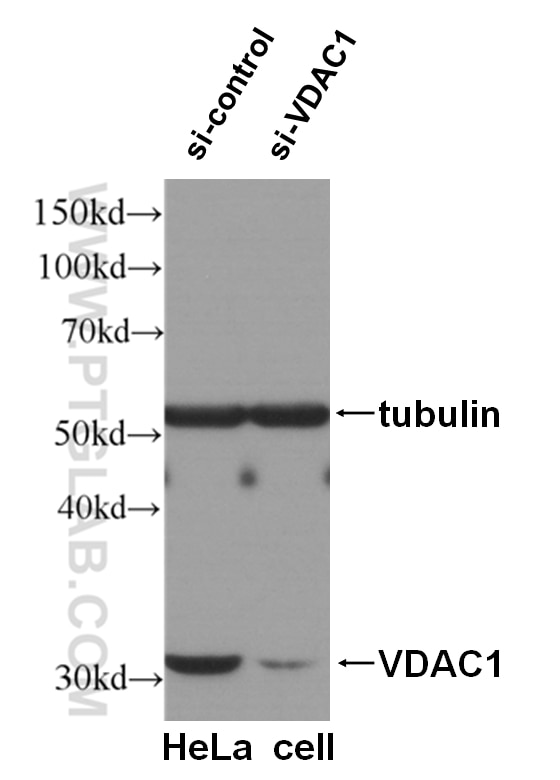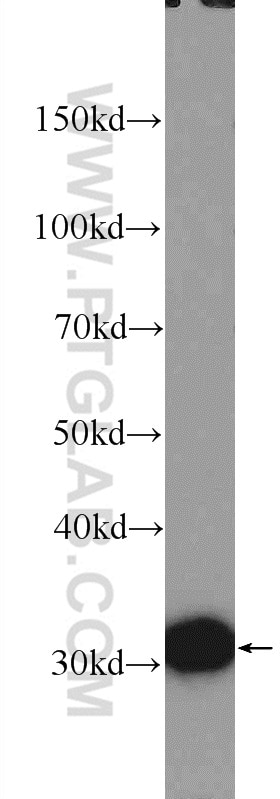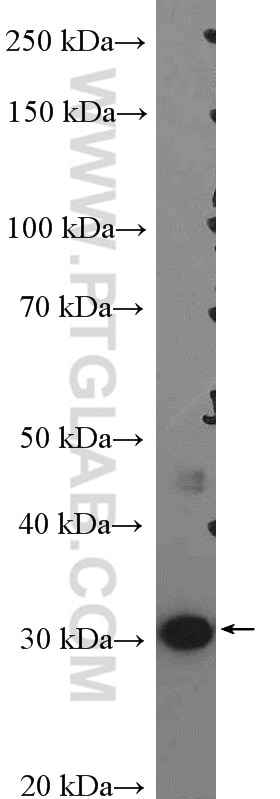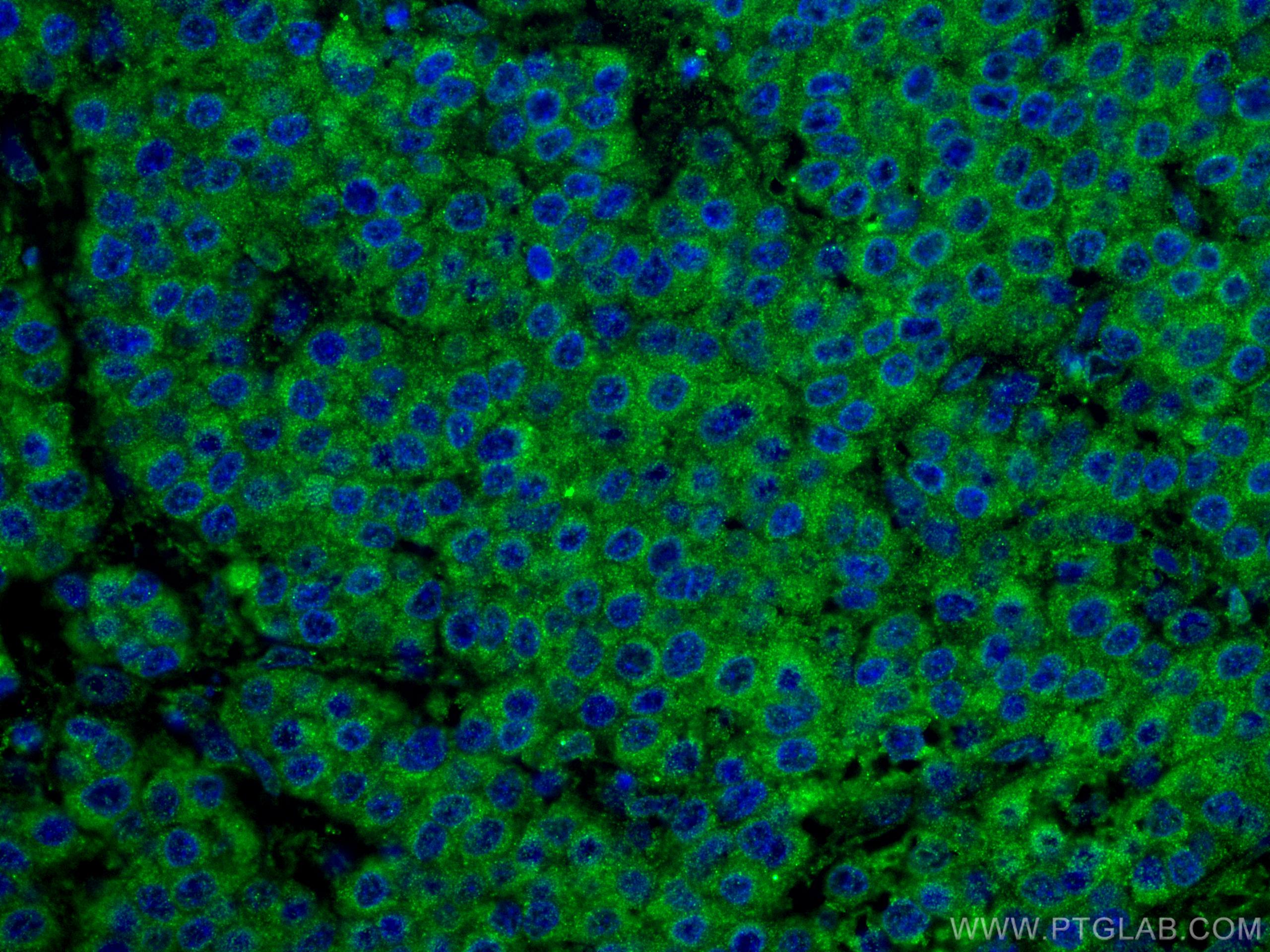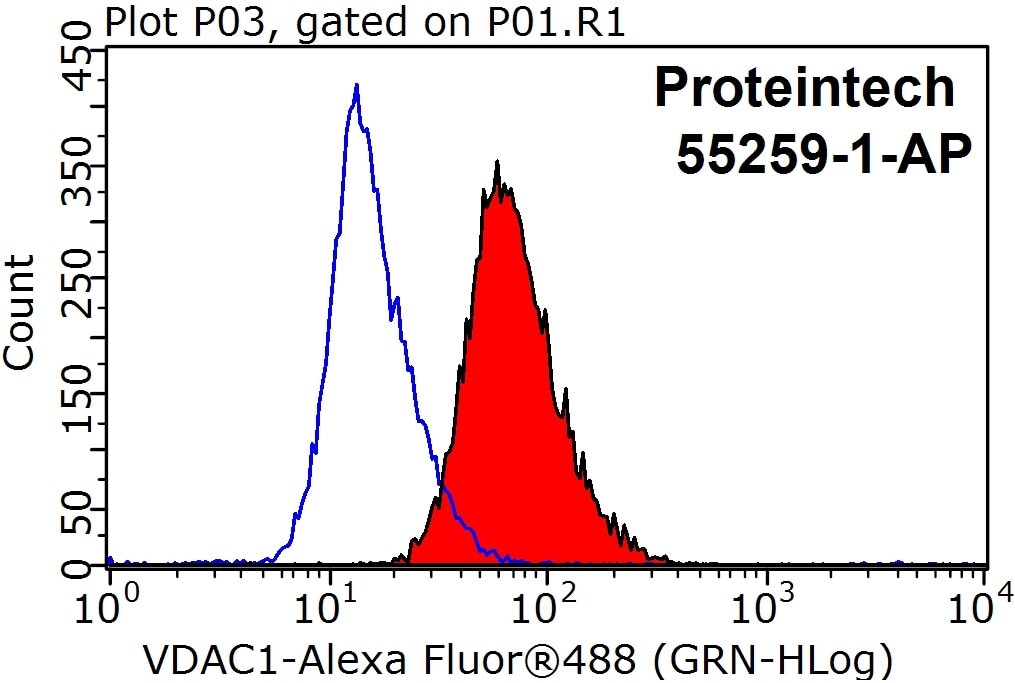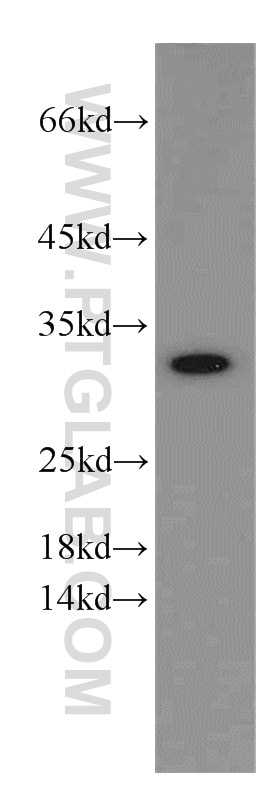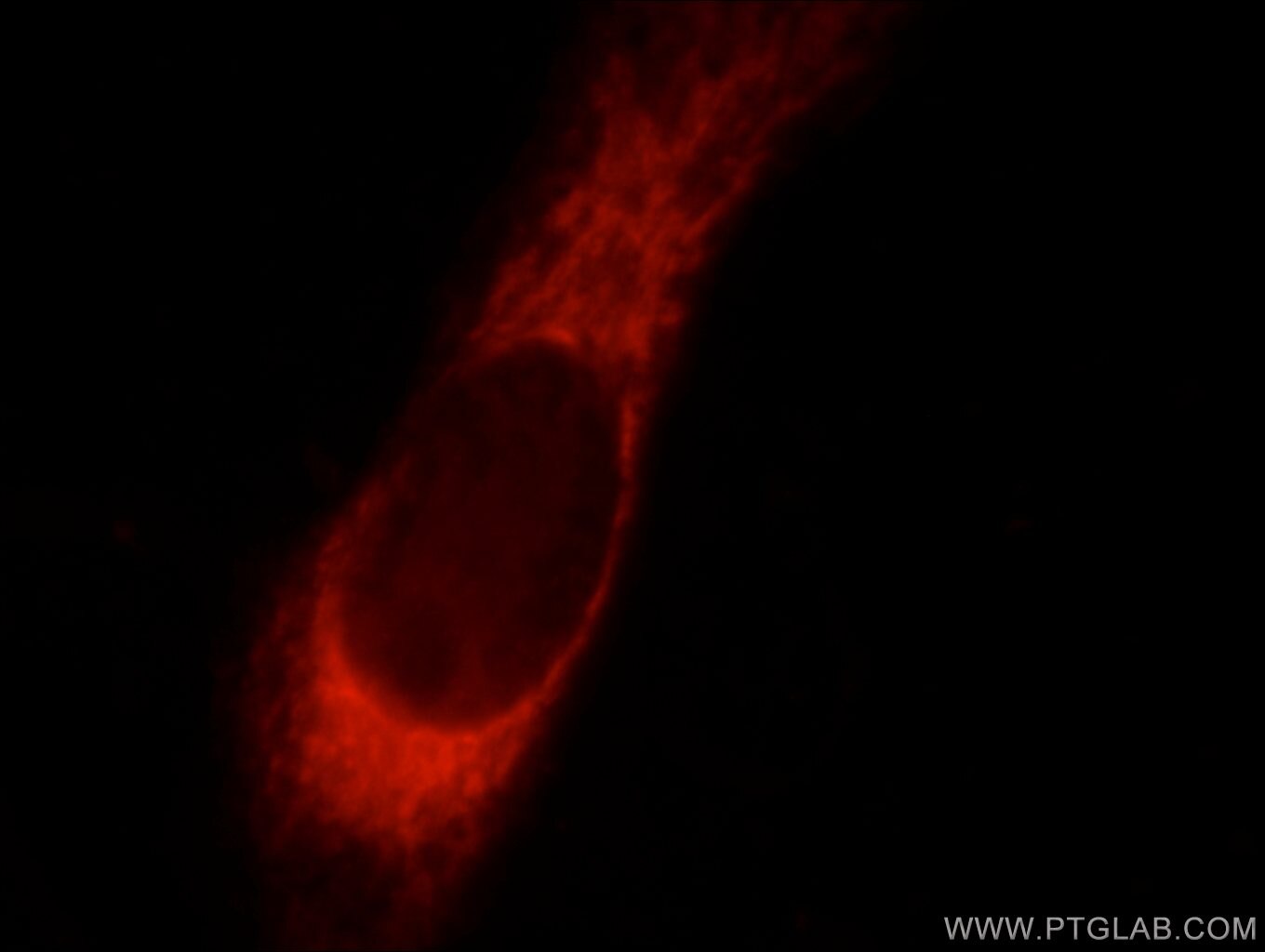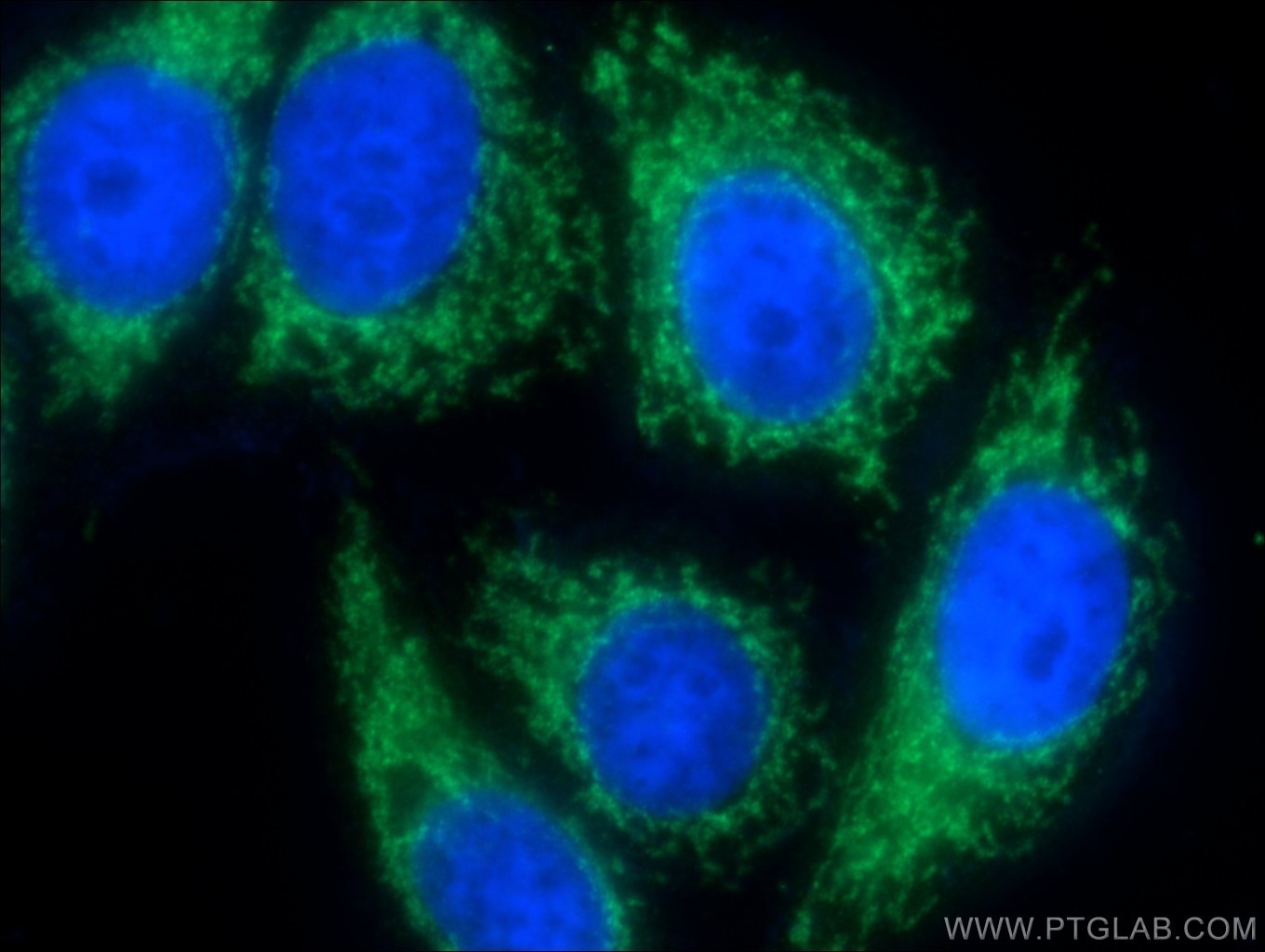- Phare
- Validé par KD/KO
Anticorps Polyclonal de lapin anti-VDAC1/Porin
VDAC1/Porin Polyclonal Antibody for FC, IF, IHC, WB, ELISA
Hôte / Isotype
Lapin / IgG
Réactivité testée
Humain, rat, souris et plus (6)
Applications
WB, PLA, IHC, IF, FC, CoIP, ELISA
Conjugaison
Non conjugué
118
N° de cat : 55259-1-AP
Synonymes
"VDAC1/Porin Antibodies" Comparison
View side-by-side comparison of VDAC1/Porin antibodies from other vendors to find the one that best suits your research needs.
Applications testées
| Résultats positifs en WB | cellules RAW 264.7, cellules A431, cellules HEK-293, cellules HeLa, cellules HepG2, cellules NIH/3T3, cellules ROS1728, tissu cardiaque de rat, tissu cardiaque de souris, tissu cérébral de rat, tissu cérébral de souris, tissu de muscle squelettique humain, tissu hépatique de rat, tissu hépatique de souris |
| Résultats positifs en IHC | tissu cardiaque humain, tissu hépatique humain il est suggéré de démasquer l'antigène avec un tampon de TE buffer pH 9.0; (*) À défaut, 'le démasquage de l'antigène peut être 'effectué avec un tampon citrate pH 6,0. |
| Résultats positifs en IF | tissu de cancer du foie humain, |
| Résultats positifs en cytométrie | cellules HepG2 |
Dilution recommandée
| Application | Dilution |
|---|---|
| Western Blot (WB) | WB : 1:1000-1:6000 |
| Immunohistochimie (IHC) | IHC : 1:50-1:500 |
| Immunofluorescence (IF) | IF : 1:50-1:500 |
| Flow Cytometry (FC) | FC : 0.20 ug per 10^6 cells in a 100 µl suspension |
| It is recommended that this reagent should be titrated in each testing system to obtain optimal results. | |
| Sample-dependent, check data in validation data gallery | |
Informations sur le produit
55259-1-AP cible VDAC1/Porin dans les applications de WB, PLA, IHC, IF, FC, CoIP, ELISA et montre une réactivité avec des échantillons Humain, rat, souris
| Réactivité | Humain, rat, souris |
| Réactivité citée | rat, bovin, canin, Humain, porc, poulet, singe, souris, Hamster |
| Hôte / Isotype | Lapin / IgG |
| Clonalité | Polyclonal |
| Type | Anticorps |
| Immunogène | Peptide |
| Nom complet | voltage-dependent anion channel 1 |
| Masse moléculaire calculée | 31 kDa |
| Poids moléculaire observé | 31 kDa |
| Numéro d’acquisition GenBank | NM_003374 |
| Symbole du gène | VDAC1 |
| Identification du gène (NCBI) | 7416 |
| Conjugaison | Non conjugué |
| Forme | Liquide |
| Méthode de purification | Purification par affinité contre l'antigène |
| Tampon de stockage | PBS avec azoture de sodium à 0,02 % et glycérol à 50 % pH 7,3 |
| Conditions de stockage | Stocker à -20°C. Stable pendant un an après l'expédition. L'aliquotage n'est pas nécessaire pour le stockage à -20oC Les 20ul contiennent 0,1% de BSA. |
Informations générales
VDAC1, also named as VDAC, porin 31HM, porin 31HL and plasmalemmal porin, belongs to the eukaryotic mitochondrial porin family. It adopts an open conformation at low or zero membrane potential and a closed conformation at potentials above 30-40 mV, to form a channel through the mitochondrial outer membrane and also the plasma membrane. Unlike other membrane transport proteins, porins are large enough to allow passive diffusion. Studies have shown that VDAC1 is subject to both phosphorylation and acetylation (PMID: 23233904). The apparent molecular weight of VDAC1 is 30-37 kDa (PMID: 14573604; 23754752; 25681439). Hypoxic conditions were found to trigger cleavage of the VDAC1 C-terminal to yield a 26-kDa truncated but active form (PMID: 22389449; 23233904). This antibody is specific to VDAC1.
Protocole
| Product Specific Protocols | |
|---|---|
| WB protocol for VDAC1/Porin antibody 55259-1-AP | Download protocol |
| IHC protocol for VDAC1/Porin antibody 55259-1-AP | Download protocol |
| IF protocol for VDAC1/Porin antibody 55259-1-AP | Download protocol |
| Standard Protocols | |
|---|---|
| Click here to view our Standard Protocols |
Publications
| Species | Application | Title |
|---|---|---|
Nat Commun An ESCRT-dependent step in fatty acid transfer from lipid droplets to mitochondria through VPS13D-TSG101 interactions. | ||
Nucleic Acids Res The human tRNA taurine modification enzyme GTPBP3 is an active GTPase linked to mitochondrial diseases. | ||
Mol Biol Evol Functional Attenuation of UCP1 as the Potential Mechanism for Thickened Blubber Layer in Cetaceans | ||
Redox Biol Adiponectin/AdiopR1 signaling prevents mitochondrial dysfunction and oxidative injury after traumatic brain injury in a SIRT3 dependent manner. | ||
Autophagy KAT7-mediated CANX (calnexin) crotonylation regulates leucine-stimulated MTORC1 activity. | ||
Autophagy Mycobacterium bovis induces mitophagy to suppress host xenophagy for its intracellular survival. |
Avis
The reviews below have been submitted by verified Proteintech customers who received an incentive forproviding their feedback.
FH Ying (Verified Customer) (04-22-2021) | good antibody. works very well with mouse cell lines.
 |
